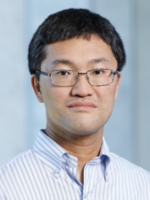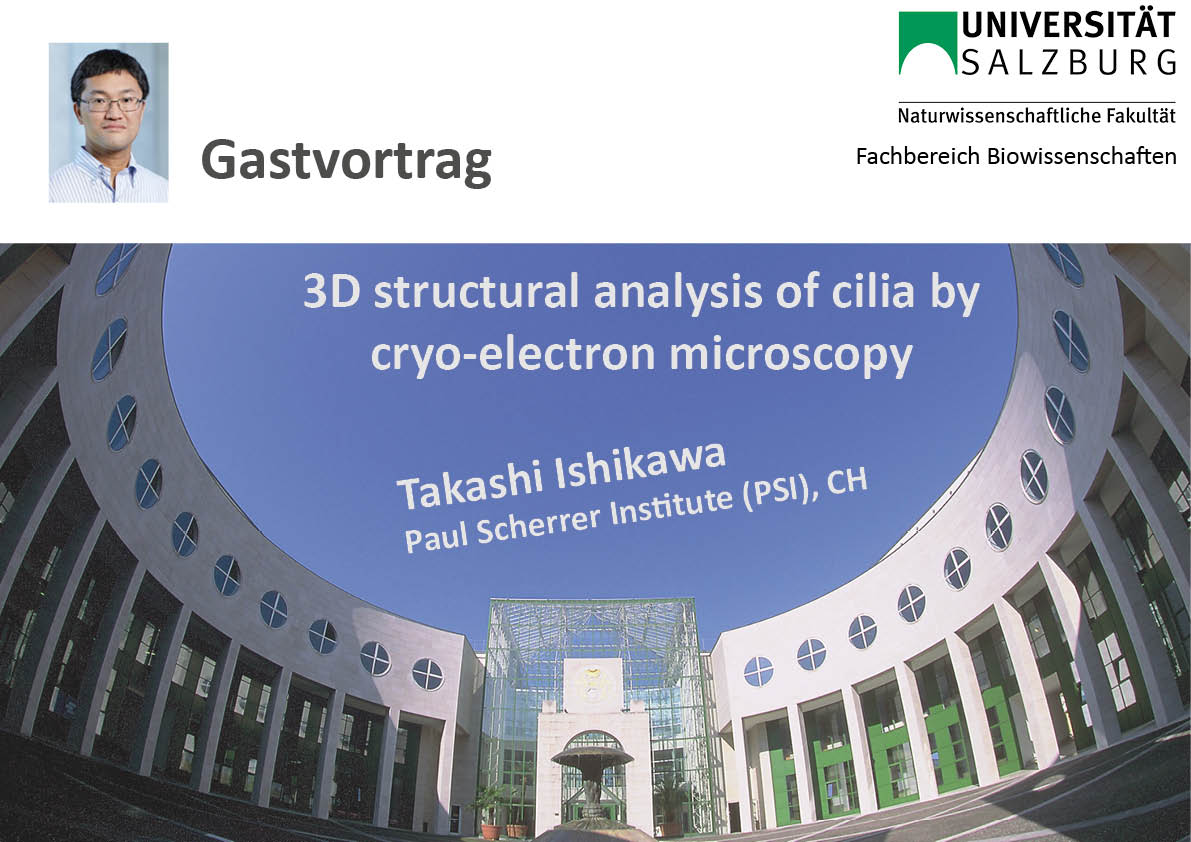14.03. – Gastvortrag (Billroth-Colloquium): 3D structural analysis of cilia by cryo-electron microscopy

Prof. Takashi Ishikawa is leader of the group ‘Cellular Structure Imaging’ at the Paul Scherrer Institute (PSI) in Villingen, Switzerland.
Abstract:
Motile cilia/flagella are beating organelles for the cell to swim or generate extracellular fluid flow, driven by ATPase motor protein dyneins on the microtubule. Ultrastructure of cilia is highly conserved from unicellular organisms to human. In the motile part of cilia, called axoneme, nine doublet microtubules surround two singlet microtubules (“9+2” structure), while dyneins, forming highly ordered complexes (inner and outer arm dyneins), bridge adjacent doublets. A number of diseases (ciliopathy) are caused by defect of cilia in tracheae, brains, oviducts and embryos.
The goal of my group is to elucidate the mechanism of cilia motility, regulation, generation and maintenance at molecular level (review in Ishikawa (2017) Cold Spring Harb Perspect Biol. 9 (1)). We employed technique of cryo-electron microscopy, especially cryo-electron tomography and 3D image analysis. With this technique, we can reconstruct 3D structure of cellular structure from intact (no fixation, no staining) cellular specimen. There are various isoforms of dyneins in cilia, dissimilarly with cytoplasmic dynein. We compared 3D structures of dynein-deletion mutants of Chlamydomonas, unicellular green algae, and described their localization in cilia. By analyzing cilia in the presence of nucleotides, we proved cooperative conformational change of dyneins in cilia, which gives us a clue how ciliary beating is generated.
With recent progress of electron microscopy technique, such as direct electron detectors and phase plates, observation of cilia at higher spatial resolution and more individual molecules became possible. We will discuss our new insight into the basal body (centriole) structure, which enable us to build a model of early stage of cilia development.





